Allard van Hoorn: To start, I would like to look a little closer at the aquariums that you installed at Marian Goodman Gallery in New York derived from A Forest of Lines created for the Sydney Opera House in 2008, The Host and the Cloud at the Le Musée des Arts et Traditions Populaires in Paris (2009–2010), and La saison des fêtes in the Palacio de Cristal in the Museo Reina Sofia in Madrid (2010). Your work seems to have several steps or layers that develop one after the other. L'Expédition Scintillante at Kunsthaus Bregenz in 2002 became the scenario for A Journey That Wasn't in 2006: a possible journey leading to an operatic staging in Central Park that led to a film for the Whitney. It feels as if one script or scenario for a possibility calls for the next over time. Can you talk a little bit how these different iterations are related and how they came about?
Pierre Huyghe: L'Expédition Scintillante was a formal hypothesis, how an exhibition would become an actual expedition. There is a set of rules or postulates at the beginning and then things unfold through different formats. In the course of the process, as things grow, the project changes. The set of rules are subjective but the relations between the facts that occurred during the process are real. I am interested in this auto-construction.
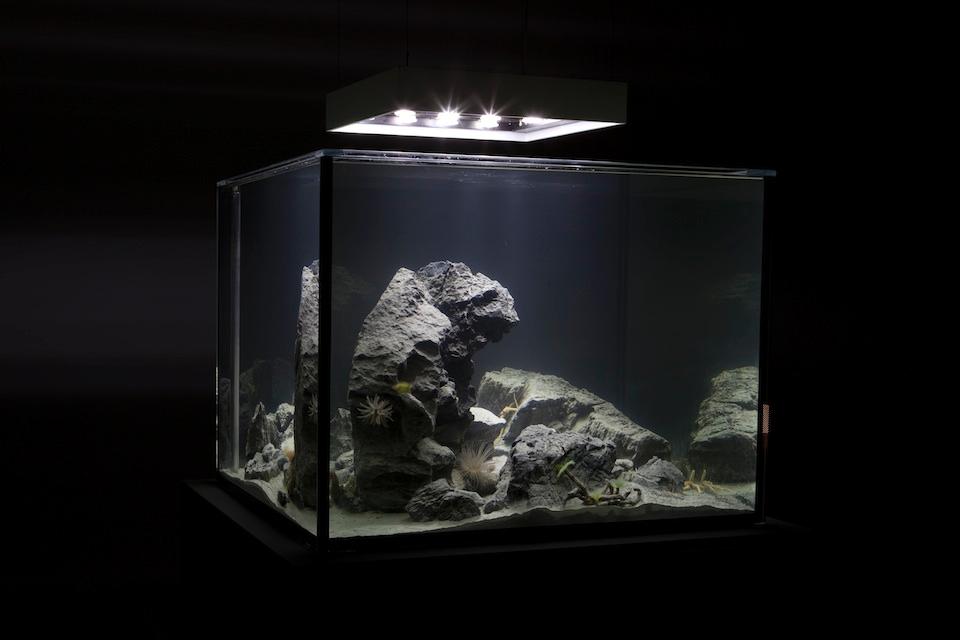
Above: Pierre Huyghe, Zoodrama, 2010. Live Marine Ecosystem, Glass Tank, Filtration System. Photos: Guillaume Ziccarelli.
In order to never exhaust them through the encounters, often, I try not to anticipate, to a certain extent, what will be the outcome of the encounter, the facts. So the relations are organically built by a set of operations rather than a scenario at that moment in the process.
Also, I noticed that certain characters, protagonists appear and disappear over the years, like different mythical animals. How are these displacements or time-travelers functioning throughout your oeuvre? Are they connecting possibilities, linking the script over time?
Right, I don't see things remaining in a frozen state. Things can always re-negotiate, they grow, disappear and reappear in a different state. Their exhibition might be intermittent but their existence keeps evolving. It's a blinking situation, a pulse, like the season rhythm. A plant appears at a certain moment, the next year it might reappear further away and has changed its colors or shape slightly. For the protagonists or some animals that cross my work it's the same. They are here, they go away for few years and then reappear connecting with something else. I don't believe in a sense of an end of something, they aren't monuments. In that regard I see the works as a garden.
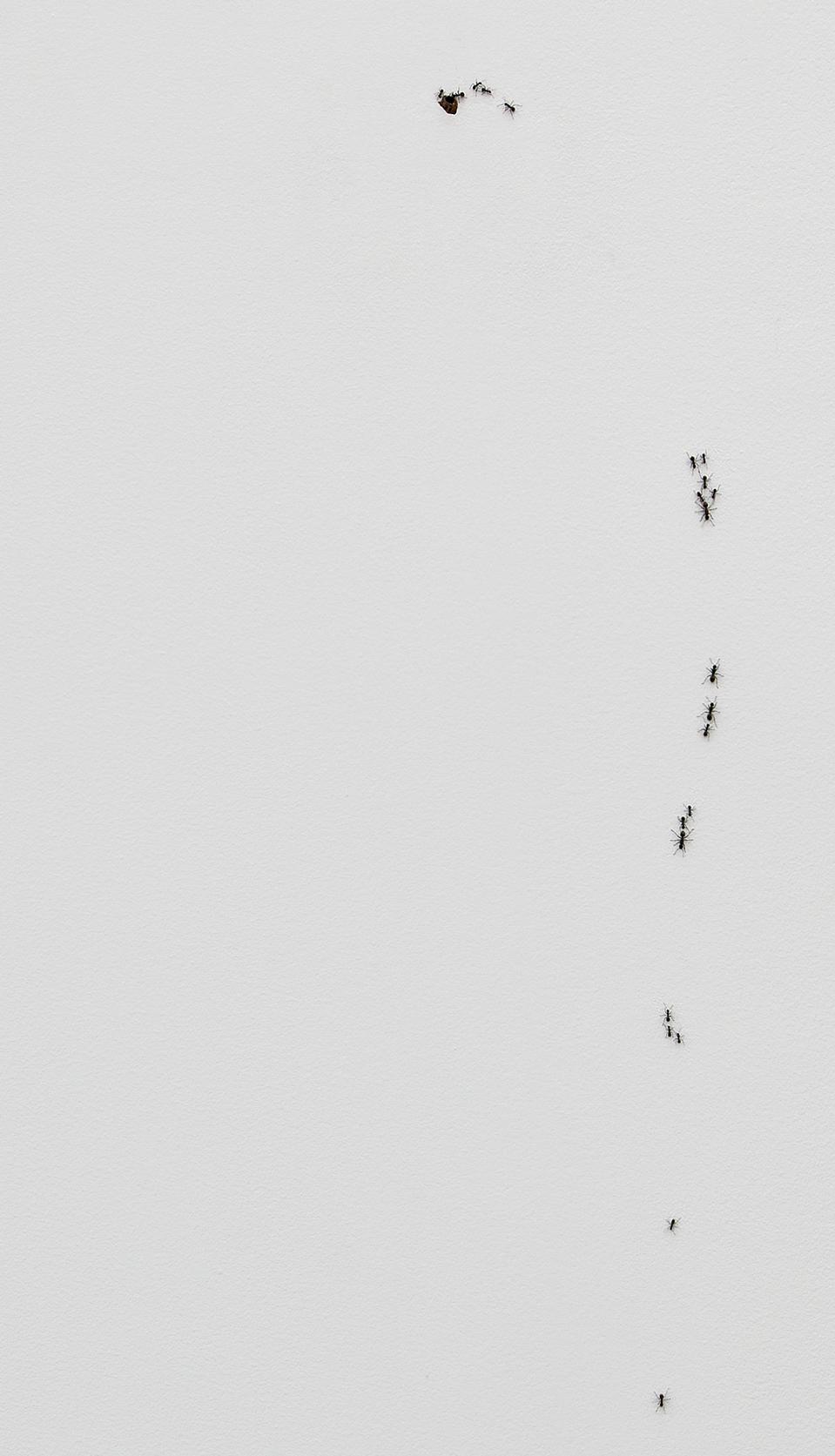
As a garden, La saison des fêtes forms a natural calendar with the plants that are signs of celebrations that appear and disappear in the course of the year. In the position of October there's the pumpkin, the evergreen tree in Christmas or the rose for Saint Valentine in February, etc; this is a cycle. What happens very fast is corruption. Bees or butterflies as travelers around the globe are carrying, spreading information from one place to another. What happens with the space, as with the sphere of the world, happens with the year cycle; people circulate around it, exporting goods and ideas, affecting or influencing a context, with no moral issue about that, as this is the nature of a closed world.
There is a cross-germination because you see the culture change, you say there is an expansion, a blowing-up from the inside of the period for which for example Christmas functions, the period becomes longer and things start to overlap just like in your calendar.
A conquest of time: the expansion of the Christmas celebration towards November and January, the rose of Valentine might drop into the Christmas season. It is a belief expanding its temporal territory, invading, affecting another one. What happens in the hybridization between a rose and a pumpkin, a new species, a potential symbol for a celebration in a certain way.
As a form of cultural development?
Yes, a cultural ecosystem, a celebration lab. If a rose crosses with a pumpkin you have a potential new sign for a celebration; yet empty of meaning, here, something between the celebration of death and love. La saison des fêtes and the aquariums relate in the fact that signs, symbols or archetypes have an existence, they appear, disappear and at the same time I try to maintain that rhythm within a form of permanence. I am interested in the condition in which something arrived and I set these conditions which are constructed and fictional but again the relationship between these entities are real. In the aquarium I help the encounters by precisely selecting the animals in that environment.
The aquarium is a place of separation, normally a collection of different species of different places around the world that are gathered together in a system supposed to be in nature, similar to a museum. I am interested in the strange relationship and separation between the human and a world.
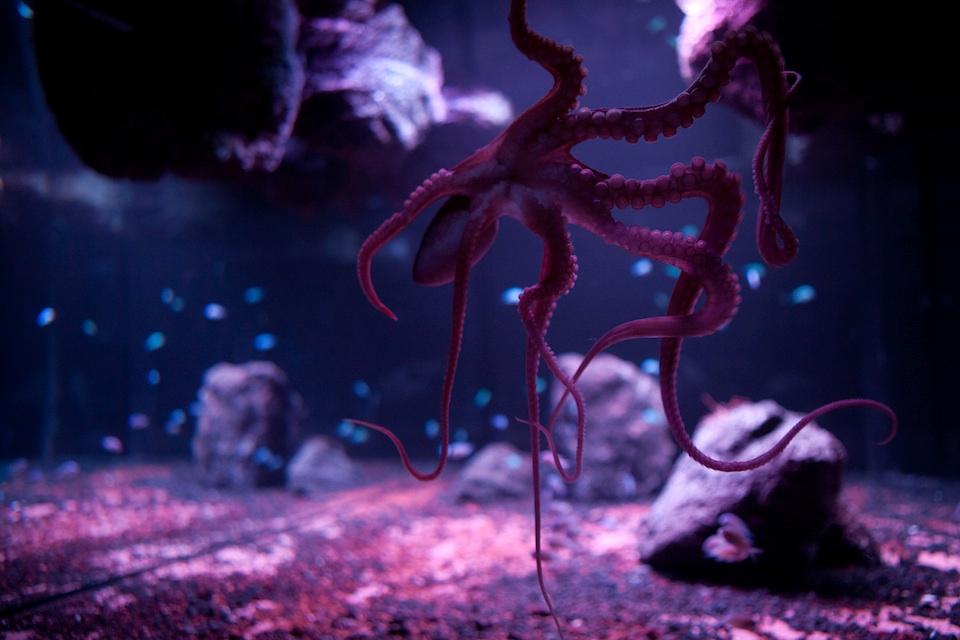
The aquarium is a place of separation, normally a collection of different species of different places around the world that are gathered together in a system supposed to be in nature, similar to a museum. I am interested in the strange relationship and separation between the human and a world. They are not encountering each other. I am interested in the moment of suspension, in boredom or hypnosis in which you can find the equivalence between the encounter and the thing that is in front of you.
Animals have a special place in your work. They have been appearing as mythical figures, they create possibilities by being in new environments, and then create some script of their own like Bambi in Streamside Day going to the white box, or the albino penguin having several different roles that maybe carry the idea of fiction versus reality. In the aquariums, the aquatic plants and the animals also create by being in their natural "umfelt" some kind of scenario by themselves because they behave like they would in nature.
In these situations there is no script, the animals do not play an emotion. Still it is a constructed condition. Each entity has being chosen according to its specific natural behavior, the "biosemiotic" that could recall a part or certain form of archetype specific to a given emotion or a situation we have encountered. Together, through their natural relation in this context it allowed to build an equivalence of this emotion. When I did the expedition to Antarctica I found an albino penguin on an island I named Ociosidad, which means "idleness," a state of boredom, the moment in which you let the consciousness go.
The aquarium itself represents one of the three earlier exhibitions, so they create scripts on top of the scripts. How is the audience then connected for completing or interacting with this process of this script upon the script?
I call the audience the witnesses. I have always constructed live situations, without script or being played by a person. For La Toison d'Or in 1993, five teenagers with animal heads representing the symbols attached to the history of the city were hanging around in a park without script. The audience were the tourists visiting the town, witnessing by accident the "natural" behavior of people wearing symbols. What is happening with the aquariums is another problematization of the experience of encounter, another aspect of previous concerns (the influence, the role, the rules rather than the script, the collection, the architecture of relations, the time-based protocol) rather than a mise en abyme.
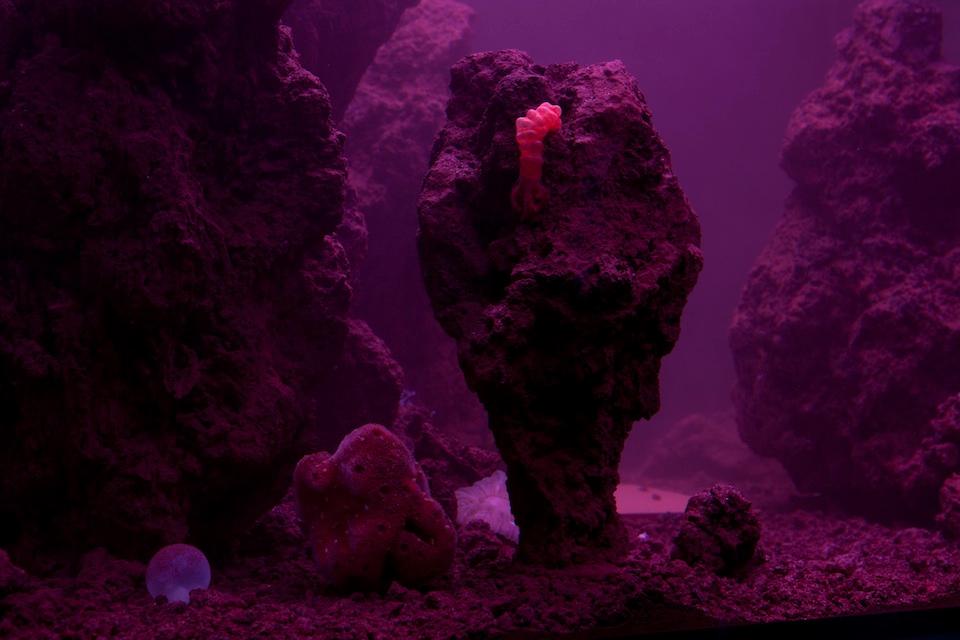
The audience is usually passive, in the character of being the audience. A witness sees the encounter of two cars that create an accident. Eventually someone would ask you; 'what did you see?' You experience without any preset an encounter that you can report on. It is also an error that you were there which can be translated into your experience in a subjective way.
The different witness collections are creating different myths of the same story. Is there a sense that the aquarium that, for example, belongs to The Host and the Cloud adds a layer to that myth, becomes a myth machine? For the Frieze Art Fair in London you created a new aquarium that in a way will create a behavioral experience connected to visiting the art fair. How do you create something like an open script in the aquarium for an art fair?
Avoiding metaphor or comment and finding archetypes. I like the work to be influenced, corrupted, by the site where it appears. I'm interested in the sedimentation of factual or fictional narratives on site, an equivalence to an anachronic archaeology. The world's first public aquarium was in Regent's Park. The zoo, the park, the world fair and the fair itself are all collections of entities. For this specific tank, the sculpture of Brancusi's Sleeping Muse will rest at the bottom of the tank. It is a shiny head reflecting the surroundings. A giant hermit crab will live within the muse's head and will transport its home all around a brutal landscape. As I was saying, I'm focusing on the animals' behaviors, the biosemiotics. I try to exploit the very basic or essential animal behavior or need and try to match these behaviors in constructed situations.
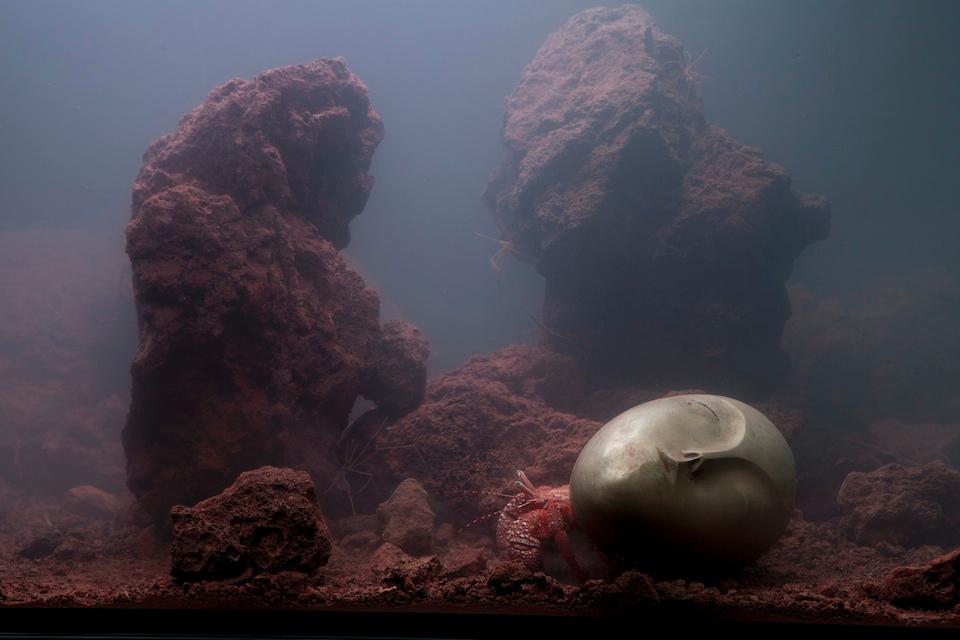
I don't know yet. I'm thinking about a permanent site for process and transformations, I don't know exactly where, but to make something in between a farm, circus, zoo, reserve. A place to encounter, a non-zoo. A natural environment, real animals, a real environment at scale 1-to-1. That is one of the possibilities of the extension of the aquariums. It could also lead to a film. I am planning to do a large pool where I can enter and film an "erotic" situation with invertebrates.
So you are looking to become emerged within the environments you create, let's say become part of the biosemiotics by engaging with the environment.
In a way yes, and I will be very excited to integrate the witnesses within the biosemiotic environment. As I was working on The Host and the Cloud in this old, closed museum, Le Musée des Arts et Traditions Populaires, I start looking closely at the place and find it crowded with life, animals everywhere within the space. For the events in the museum, I worked around different protocols of performing, playing, being. We just went from having actors to having actors under certain conditions, then adding some dogs, then putting the actors under uncontrollable mode, hypnosis, taking drugs, alcohol, having sex. These are things you cannot play. You do. You have. Following that line, I ended up with the ants. Who don't play. They just hang around the museum, they are part of it.


